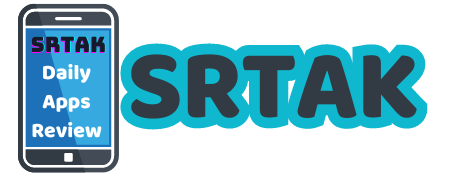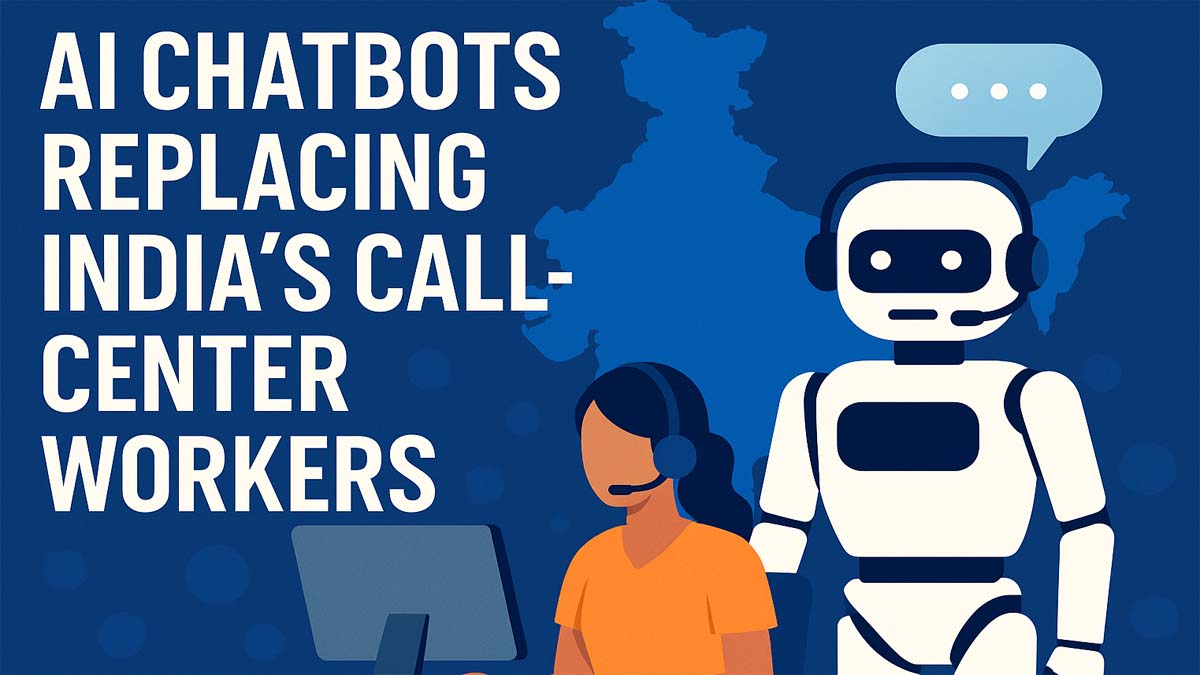AI Chatbots Replacing India’s Call-Center Workers – The Rise of Automation in 2025
The story of India’s global call-center dominance may be taking a dramatic turn. In 2025, AI chatbots are replacing India’s call-center workers at a rapid pace, reshaping the future of the country’s $30 billion BPO (Business Process Outsourcing) industry.
According to a Reuters report (15 Oct 2025), companies across banking, telecom, and e-commerce sectors are switching from human-powered customer service to advanced AI chatbot systems that operate 24/7, cut costs, and offer instant responses.
While AI is revolutionizing efficiency, it’s also sparking concern: what happens to millions of Indians whose livelihoods depend on call-center jobs?
India’s Call-Center Empire and Its Evolution
For over two decades, India has been known as the “world’s call center capital.”
Cities like Bengaluru, Hyderabad, Pune, and Gurugram built massive employment networks, serving global clients from the U.S., U.K., and Australia.
At its peak, the Indian BPO industry employed more than 1.4 million workers, handling voice calls, emails, and support tickets for international brands.
But now, AI chatbots — powered by large language models like GPT-5, Google Gemini, and Anthropic Claude — are stepping into these roles.
The AI That’s Taking Over
Companies are deploying advanced AI solutions that mimic real conversation, sentiment, and even empathy.
Chatbots no longer sound robotic — they understand context, emotion, and cultural nuance.
Some of the leading tools being deployed include:
-
ChatGPT Enterprise (by OpenAI) – handles complex customer queries using contextual memory.
-
Yellow.ai (India) – an Indian conversational-AI startup now powering voice-based call solutions in Hindi, Tamil, and Bengali.
-
Genesys AI Cloud – integrating with Indian companies for omnichannel automation.
-
Kore.ai & Gupshup – Indian AI platforms enabling natural-language understanding in regional dialects.
This AI revolution is cutting operational costs by 40–60% for large customer-support organizations, leading many firms to scale back on traditional hiring.
How Big Is the Impact?
According to industry analysts, around 250,000 Indian call-center jobs could be automated or transformed by the end of 2026.
AI chatbots can handle up to 80% of basic customer queries — billing, delivery status, password resets — which previously required human agents.
The rest are escalated to “human-in-the-loop” employees who intervene only for complex issues.
Example:
A telecom customer asks:
“Why is my recharge not reflecting?”
Instead of a human agent checking the system, an AI bot:
-
Reads customer data via API
-
Detects failed transaction
-
Initiates refund
-
Sends confirmation — all within seconds
No waiting queue. No human delay.
Why Companies Are Switching to AI
-
24/7 Support:
AI never sleeps — it can handle global customers round-the-clock without breaks. -
Cost Efficiency:
Salaries, training, and attrition have long been challenges for call centers. Automation reduces recurring costs drastically. -
Accuracy & Personalization:
AI learns from every conversation, improving response accuracy and personalization. -
Multilingual Communication:
Modern chatbots can speak English, Hindi, Tamil, Telugu, Bengali, and even Arabic — perfect for India’s multilingual customer base. -
Scalability:
During peak shopping seasons, AI can handle millions of queries without new hires.
What Happens to the Workers?
This is where the conversation turns serious.
India’s BPO industry provided stable jobs for graduates, especially in Tier-2 cities. With automation taking over, upskilling is no longer optional — it’s survival.
New Skill Demands:
-
AI Supervision & Prompt Engineering
-
Chatbot Training & Fine-Tuning
-
Sentiment Analysis Review
-
AI Workflow Auditing
-
Data Annotation & Model Validation
Some companies are retraining existing employees to monitor and train AI systems instead of replacing them completely.
“The jobs are not vanishing — they’re evolving,” says a Bengaluru-based IT analyst.
“Tomorrow’s call-center agent will supervise 100 AI bots instead of handling 100 calls personally.”
How Indian Companies Are Responding
-
TCS and Infosys are integrating AI-as-a-Service for global clients, blending automation with human expertise.
-
Wipro has launched internal “AI Skill Labs” to upskill over 200,000 employees by 2026.
-
Tech Mahindra has begun offering managed AI customer-service solutions.
-
Zoho and Yellow.ai are developing privacy-first, India-built chatbot platforms to reduce foreign AI dependence.
These shifts signal that India’s tech giants see automation not as a threat but as the next evolution of outsourcing.
The Economics Behind the Change
-
Average Cost per Agent (Human): ₹25,000–₹40,000/month
-
Average Cost per AI Chatbot: ₹5,000–₹10,000/month (license + infrastructure)
Even factoring in setup and training, the savings are enormous.
For a 10,000-seat call-center operation, AI can reduce annual expenditure by ₹300–400 crore.
That’s irresistible for global clients seeking efficiency.
Voices from the Industry
“We had 500 customer-support agents last year. Now we have 150 — but our response rate has improved by 30%,”
says the COO of a major e-commerce firm in Gurugram.
“The AI doesn’t take leave or misinterpret tone,”
adds a U.S.-based telecom client working with an Indian vendor.
However, workers’ unions are expressing growing anxiety.
Many demand government policies to protect or retrain employees displaced by automation.
The Human Touch Still Matters
While AI handles routine queries efficiently, customers still prefer human empathy for serious issues — disputes, emotional distress, or high-value services.
Hence, experts predict a “hybrid future” —
AI for first-level interactions, humans for escalation and relationship management.
This balance could preserve 60–70% of call-center employment while still achieving massive efficiency gains.
Future Outlook: From Call Centers to AI Operations Centers
Over the next five years, traditional call centers may transform into AI Operations Centers (AIOCs), where human employees:
-
Supervise AI chatbots
-
Analyze conversation data
-
Improve AI tone, accuracy, and compliance
-
Ensure fairness and privacy standards
The focus will shift from answering calls to training AI that answers calls.
This new ecosystem will need AI trainers, data analysts, and compliance officers, creating a new wave of tech employment in India.
Conclusion: Adapt, Don’t Resist
The rise of AI chatbots replacing India’s call-center workers marks both disruption and opportunity.
Automation is inevitable, but India’s adaptability and technical expertise give it a unique edge.
With smart policy, strong reskilling programs, and ethical AI development, India can convert this challenge into its next global leadership story — transforming from the “call center capital” to the “AI operations capital” of the world.


